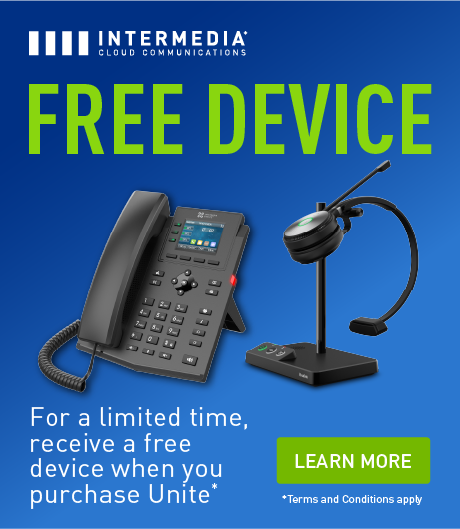You need your contact center to function efficiently. Smooth operations contribute to higher revenue, deliver on customer expectations, and reduce costs.
Many leading brands are turning to innovative technology to meet these demands. The top solution has become contact center as a service platforms.
In fact, nearly 75% of companies prefer this cloud-based solution. In our case, we’ve helped thousands of companies take advantage of these advanced communications services.
Dive in to find out more about how CCaaS improves your contact center.

Key Takeaways:
- Contact center as a service software is an online platform for communicating with customers.
- CCaaS software is superior to traditional call centers in most ways and is more practical for small and mid-sized businesses.
- Critical CCaaS features include call flows, analytics, reports, engagement features, and omnichannel communications.
What Exactly Is Contact Center as a Service?
A contact center as a service refers to an online customer experience platform. Your provider hosts everything at protected data centers. Your team simply accesses all communications features through the internet.
This subscription-based model instantly gives you the technology to delight customers. In addition, the system is more than an inbound and outbound call center. You can effortlessly handle text, online chat, email, and video conferencing.
What Is the Difference Between Contact Center as a Service and Traditional Call Center Applications?
Traditional on-premise call centers are cumbersome to operate and deceptively expensive. An on-prem system involves:
- Additional utility costs to run equipment
- Structured cabling to connect the system
- Extensive space to house the operation
- Technical staff to configure and manage everything
These expenses add up quickly. Ultimately, cloud alternatives offer a lower cost of ownership with no sacrifice in functionality. Small and mid-sized companies can use premier features and compete with large corporations.
Also, on-premise systems can also take months to deploy. In contrast, your contact center as a service can be up and running in only a few days. With a cloud solution, users also enjoy real-time updates and constant feature enhancements.
What Is the Difference Between CCaaS and UCaas?
Unified communications as a service software focuses on enhanced internal communication and collaboration. Contact center as a service software delivers tools for agents to handle inbound and outbound calls.
A top communications provider, such as Intermedia, can offer you a fully integrated solution that has both elements. (Not every company does this, and the lack of full compatibility can hamper your productivity and customer experience.)

What Are Critical Features and Top Benefits of Contact Center as a Service?
You’ll enjoy high reliability, continuous support, and an extensive suite of features with a contact center as a service. Consider other remarkable advantages of CCaaS.
Customizable Call Flows for Optimized Interactions
Contact center as a service architecture provides you the opportunity to customize call flows. These flows can improve interactions between contact center staff and customers.
Skill-based routing also enriches the customer experience. This approach routes inquiries to the most suitable agent and powers faster resolutions.
The system does this by letting you tag “preferred” agents. These representatives take the lead on complex cases. As a result, callers don’t go through constant transfers and get frustrated.
In addition, you can leverage “callbacks.” Callers have the opportunity to keep their place in the queue without waiting on hold. When it’s a customer’s turn for assistance, the person receives a callback with an agent ready to solve the issue.
Advanced Data and Reports
Reporting and analytics are indispensable for measuring performance and adhering to service levels. Historical data powers smarter decision-making for future operations. Even better, real-time dashboards help you manage operations in the moment.
Additionally, current contact center as a service platforms offer multiple preconfigured reports. You can check vital metrics, such as:
- Call distribution
- Service level compliance
- Unanswered calls
- Post-call surveys
You can also generate custom reports that meet your specific needs.
Centralized Operations
When you adopt a contact center as a service, you’ll have the capacity to support multiple sites. If you have contact centers in various physical locations, you can connect and centrally manage them all via one online portal.
Imagine how this key feature could improve operations and oversight!
An Omnichannel Approach
Customers in the modern world expect to be able to contact you across all channels. Your contact center as a service seamlessly integrates all customer communication channels.
With this newfound transparency, you can dramatically improve common processes. For example, queues are no longer just for voice calls. Video calls, chats, emails, and SMS are now on one platform and easy to link as one conversation.
You also resolve another common irritation for callers. No one wants to repeat their story to multiple agents; callers simply want a fair and efficient resolution.
With advanced contact center software, the system records all touchpoints for a given person. Any agent who works with a customer gains quick access to that person’s previous interactions, eliminating annoying repetitions. A contact center as a service makes this a reality.
Enhanced Engagement
Take customer service to a new level with audience engagement features. These capabilities let you execute outbound calling and outreach campaigns.
Being proactive can ensure customers remain loyal and get timely resolutions to any challenges. Employ dynamic notifications to extend your reach while also being considerate of audience preferences.
To gauge customer satisfaction, you can also send out post-call surveys. With this automated function, you’ll be able to gather further data about customer perceptions.
How Do You Deploy a Contact Center as a Service?
With a strong internet connection and reliable devices, your online contact center can be up in days. Before you sign a contract, review the following considerations:
- The strength of your internet signal to ensure high-quality calls
- The features your company needs from a contact center
- The apps you’ll integrate with your contact center as a service for workflow automation
- How you’ll train your agents
Your provider should walk you through the onboarding process to ensure it’s a worry-free experience.
How Do You Pick the Right Contact Center as a Service Vendor?
If your contact center is underperforming or too costly, it makes sense to upgrade. Still, making the shift to a contact center as a service involves many considerations.
Ensure your provider offers the advanced automated features above. The service should be consistently adding new attributes as technology improves.
Excellent data security and up-to-date regulatory compliance are also vital. With cutting-edge protection, your confidential communications remain safe.
Above all, ensure the company has outstanding customer support. You must be able to count on 24/7 assistance to troubleshoot any challenges that arise.

Why Is Intermedia the Ideal Contact Center as a Service Provider?
Intermedia Contact Center is the top cloud-based solution that helps your business scale. Our contact center as a service gives you the power of efficient interactions, meaningful insights, productive teams, and a superior customer experience.
Get started by downloading our product overview.
July 7, 2023
Explore other posts on these topics: Contact Center Unified Communications






